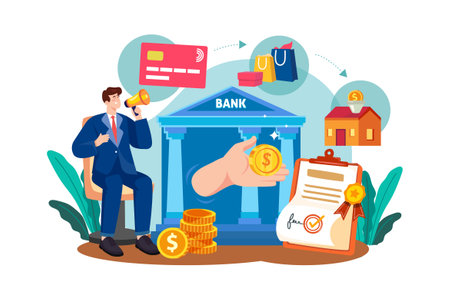As the fintech industry undergoes massive digital transformation, neobanks are becoming increasingly popular thanks to their accessibility, transparency, and improved customer experience. But how do they differ from digital banks, and what challenges do they face? This article provides a comprehensive overview of neobanks, their brief history, and key advantages over traditional banking.
What is a neobank?
A neobank is a digital banking platform that provides various banking services and operates solely in the digital environment. The main goal of neobanks is to make financial services and products more accessible and transparent. This is achieved through 24/7 access via the Internet, more favorable offers (i.e., lower fees), and integrations with various budgeting tools.
To ensure trustworthiness and regulatory compliance, neobanks either obtain their own banking licenses or partner with traditional banks. This serves as an indication of reliability and credibility and allows neobanks to operate alongside their traditional counterparts. And if you need an example of a neobank, think of the US-based Current or UK-based Monzo. As for the neobank development, it is a complex process that consists of several stages, including management of all needed integrations, development of a mobile application, and implementation of basic banking features. Since a neobank is a highly sophisticated and feature-rich software product, its development should be handled by a reliable IT provider like SoftTeco who has solid knowledge of the neobanking market.
Digital bank vs neobank: the main differences
The biggest misconception that people have is that digital banks are the same as neobank. It is therefore important to understand the concept of each and understand the main ways in which neobank vs digital bank differs.
A digital bank is an online subsidiary of a traditional and regulated bank. In this way, the bank operates in both on-premises and digital environments and has physical branches. A neobank, on the other hand, operates only in the digital environment and doesn’t have physical offices. While neobanks can function independently, they often partner with traditional banks to comply with needed regulations and gain credibility.
One more big difference between these two bank types is the way they operate. Since a digital bank is a subsidiary of a traditional bank, it requires that its customers undergo the same mundane procedures as they do when visiting an on-premises bank. That means, digital banks usually require excessive amounts of information from the customer and request them to fill in numerous forms.
Neobanks, on the contrary, tend to handle all operations in an extremely swift and transparent manner. For example, they do not require any information from the customers before allowing them to open an account. This makes neobank operations much faster and more user-centric, also making the neobank services more accessible and attractive.
Top reasons why neobanks are the future of fintech

While neobanks are only starting to gain traction, they already offer a plethora of benefits to its users over the traditional banking system. Now that we are clear on the “what is a neo bank” question, let’s look at the the main neobank benefits in detail:
Accessibility
As we already mentioned, neobanks are highly accessible and that’s one important reason why customers might choose them over traditional banks. Think about it: instead of going to a physical office and filling in several forms, you can open an account or perform another operation right from home, at any time. All you need to have is access to the Internet and you can access the selected neobank from anywhere via the preferred device.
Lower fees and more attractive offers
In addition to more accessible services, neobanks also offer lower pricing and more favorable terms of use for their products. For example, neobanks tend to have lower transaction costs and zero maintenance fees, which, without a doubt, is a highly valuable advantage.
Faster operations
Since the neobank meaning implies the use of advanced technologies, it allows them to significantly speed up and automate their operations. For example, neobanks offer such services as instant payments and virtual cards, thus allowing customers to manage their financial transactions of their bank accounts in one digital space. The speed and ease of operations serves as a big advantage since modern customers are used to instant processing of their requests and are not willing to go through massive paperwork.
Improved customer service
Faster operations and lower costs ultimately lead to better customer experience which is vital in modern fintech domain. As more and more companies deploy innovative tech solutions to remain competitive, it is vital to provide top-tier customer service. With their transparency and accessibility, neobanks offer superior user experience and personalization. And don’t forget about the use of AI-powered chatbots and personal assistants that help users manage their finances in a data-driven, smarter way.
Things to consider when starting a neobank

A neobank is a complex digital product and the neobank app development and operation need to align with regulatory requirements and specific industry standards, like data security and privacy. Below we list the main considerations for anyone who wishes to start a neobank:
- Regulatory compliance: since neobanks operate in the digital environment, they often serve international clients. Hence, a neobank should comply not only with international but also specific local regulations. A good example of the essential regulation is the well-known GDPR standard.
- AML and KYC systems: Anti-Money Laundering and Know Your Customer systems are critical for any fintech solution, including neobanks. They ensure the security of operations and the customers’ data and help minimize fraudulent activity.
- BaaS provider: Banking as a Service enables banks to offer their services via third-party providers. In this way, BaaS becomes an essential component of any neobank and should be carefully selected.
- Continuous testing: since neobanks process sensitive data on a daily basis, it is critical that a neobank solution displays excellent performance and security. To ensure that, you need to implement continuous testing in the development process. In this way, you will be able to detect any issues and vulnerabilities before the platform is officially launched.
Summing up
As the fintech industry shifts towards personalization and accessibility, neobanks for sure will become the rightful alternative to traditional banks. With their innovative approach towards financial services and a high level of transparency, neobanks can attract more customers, especially the ones that don’t have an opportunity to visit physical banks. At the same time, neobanks need to maintain a high level of security and meticulously monitor the quality of their software and third-party providers since even the smallest vulnerability can lead to serious consequences.



